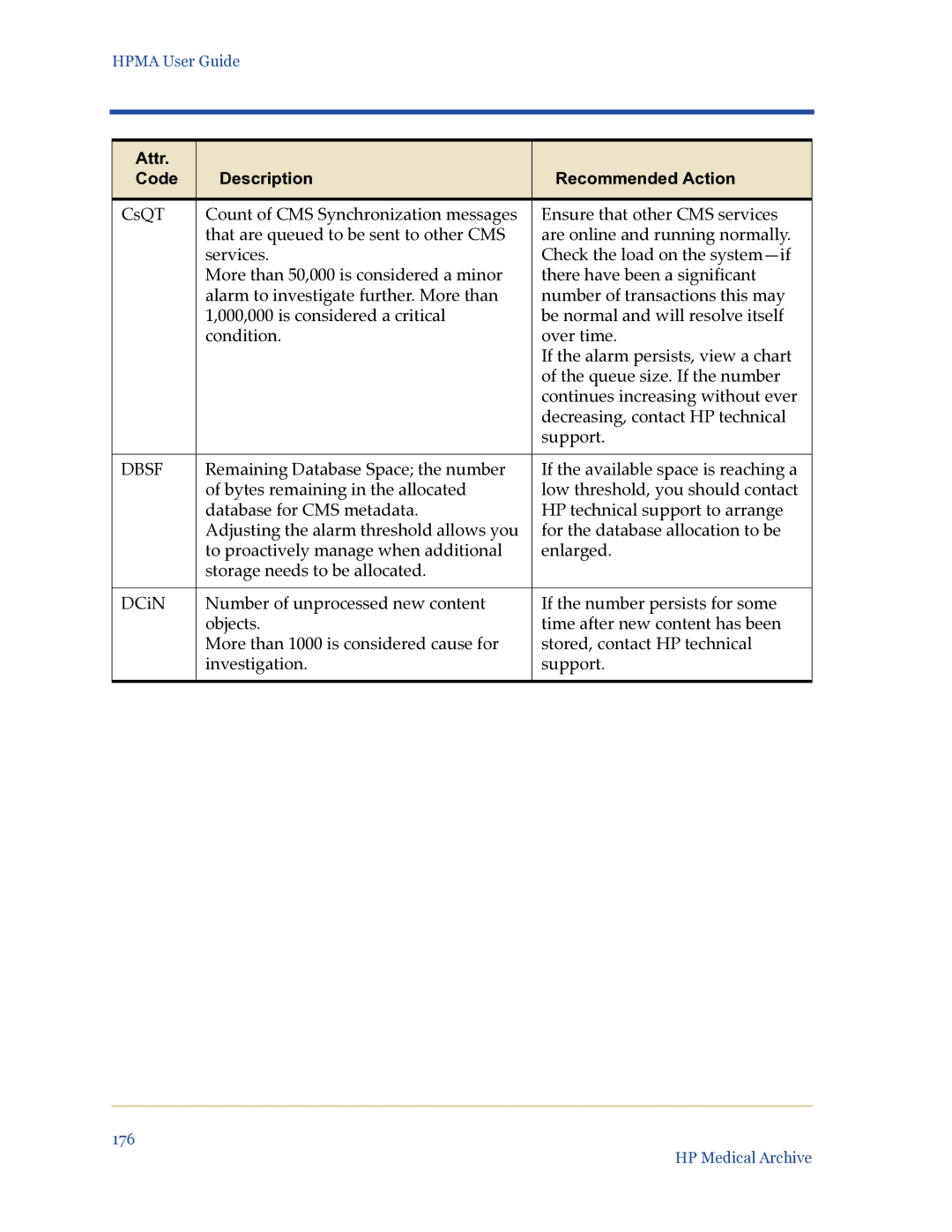
HPMA User Guide
Attr. | Description | Recommended Action |
Code | ||
|
|
|
CsQT | Count of CMS Synchronization messages | Ensure that other CMS services |
| that are queued to be sent to other CMS | are online and running normally. |
| services. | Check the load on the |
| More than 50,000 is considered a minor | there have been a significant |
| alarm to investigate further. More than | number of transactions this may |
| 1,000,000 is considered a critical | be normal and will resolve itself |
| condition. | over time. |
|
| If the alarm persists, view a chart |
|
| of the queue size. If the number |
|
| continues increasing without ever |
|
| decreasing, contact HP technical |
|
| support. |
|
|
|
DBSF | Remaining Database Space; the number | If the available space is reaching a |
| of bytes remaining in the allocated | low threshold, you should contact |
| database for CMS metadata. | HP technical support to arrange |
| Adjusting the alarm threshold allows you | for the database allocation to be |
| to proactively manage when additional | enlarged. |
| storage needs to be allocated. |
|
|
|
|
DCiN | Number of unprocessed new content | If the number persists for some |
| objects. | time after new content has been |
| More than 1000 is considered cause for | stored, contact HP technical |
| investigation. | support. |
|
|
|
176
HP Medical Archive
